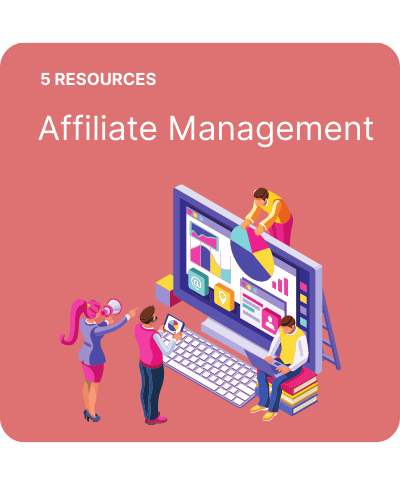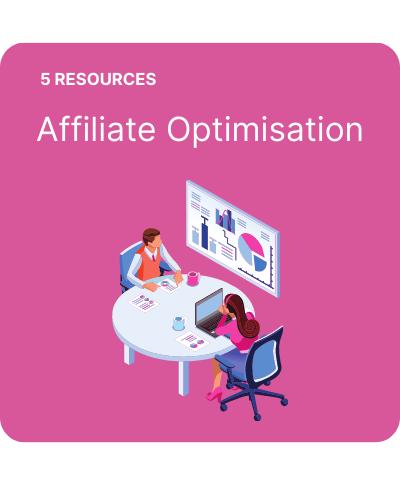What Are Affiliate Program Best Practices?
Affiliate marketing best practices are a set of guidelines designed to effectively launch and nurture an affiliate program. Common practices will include affiliate payments, communications and program terms.
It is about covering the basics and then layering advanced strategies and tactics on top. Without a strong foundation, then an affiliate program won’t be as successful as it could be.
With that in mind, here are the 16 most important affiliate marketing best practices brands need to know in 2021:
1 Do your research
Jumping into bed with the first affiliate network you find and launching a program before you have done your research can be a costly error. Not only might a program performance suffer, but you could be tied into a lengthy contract.
The most successful affiliate program launches are down to in-depth research. Firstly, you want to know where your competitor has a program and how they are incentivising their partner.
Brands can benefit from their competitors having done the hard work for them. More mature affiliate programs will have spent time recruiting publishers. By joining the same network you can benefit from this pool of ideal partners.
Additionally, it is important to understand your customer profiles and where they spend time online. This can steer your recruitment strategy and improve conversion rates.
2 Set realistic channel goals
It is important to build your affiliate strategy against measurable channel goals. Without this, your expectations of the channel could be way off from what it ends up generating.
At the beginning of the launch of a program, your KPI’s might be more recruitment and traffic-based. As the program grows, you can start to switch your attention towards conversion rates and affiliate sales.
3 Create attractive commission rates
If you have completed your competitor analysis then you should be in a better place to confirm the best commission rates for success.
Remember, when commission rates are lower than your competitors or vertical as a whole. It will be much more difficult to entice affiliates to promote your brand.
But, never stretch yourself. There could potentially be a big impact on your relationships should you reduce commission rates further down the line. An affiliate might have spent a lot of time and effort promoting your brand, only to have their commission hit further along.
Plan your best commission rates from the beginning and make them as futureproof as possible.
4 Offer incentives or bounties
If your commission rates can’t compete with others in your space, or you are looking to take your program to the next level. Then incentives or bounties can help you do just that.
How big or small you make the reward and how many receive it, is up to you.
Though the chance to earn extra commission can be a real carrot to many. With new programs, brands could offer traffic or first sale bonuses to get affiliates engaged early on and then work on maintaining that interest over time.
5 Ask customers to become affiliates
Customers are often very loyal to particular brands. Take advantage of this and see if they are interested in becoming an affiliate.
Recruitment can be incredibly timely, so any way you can speed will allow you to focus on other areas of management.
Taking the idea that the affiliate channel is a payment model as opposed to a channel. Then there is no reason why you can’t reward a customer for sharing an affiliate link with friends or family.
6 Be proactive with recruitment
Active recruitment is crucial to affiliate programs of all sizes. As we previously mentioned, it can be very time-sapping.
If you are on an affiliate network a good chunk of recruitment has been automated for you. They operate a lot of outreach to find new affiliates. Although, this can often be focused on a particular vertical or publisher type.
But, to ensure you stay ahead of your competition and continue to grow. You will need to have a plan for weekly recruitment as part of your program management.
To begin with, this could be actively searching the network. Over time though, you want to be recruiting affiliates from outside here to give you an edge on other brands.
7 Get found by affiliates
Affiliates are constantly on the lookout for new brands to work with. Make sure you a searchable with an affiliate page on your website.
Linked in the footer typically this page should be optimised for SEO and include a link to the affiliate program to sign-up.
Giving an overview of the programs key benefits, an affiliate page is a great example of passive recruitment. Allowing affiliates to easily find your program and join as efficiently as possible.
8 Have ironclad program terms
To reduce time spent on program admin tasks such as affiliate compliance. Before you launch your program make sure you have your program terms and conditions set in stone.
Your terms and conditions are a set of rules that brands can point to if they find a rogue affiliate acting untowardly. It lays out what an affiliate can or can’t do when it comes to promoting the brand and can also cover affiliates who may have innocently acted unlawfully.
Make your terms clear and easy to digest so affiliates of all competency can understand and abide by them.
9 Keep focused on the numbers
The beauty of the affiliate industry is that it comes with a wealth of data to enable you to analyse performance.
Regularly checking your numbers will help you spot trends (good or bad) in your affiliates. By adding context, the numbers can lead to seeing for example whether certain publishers revenue has dropped because of the conversion rate or a fall in AOV. As a result, you can effectively approach the situation with a plan to fix it.
Working your data against a budget or target could also mean finding opportunities to increase commissions at certain times of the year. Maybe this is around a product launch or a competitive couple of months for your brand.
10 Manually approve your affiliates
I would always highly recommend auto-approving all affiliate partners that join your program.
Accepting all affiliates will open the door to any fraudulent affiliates looking to make a quick buck. It also means it will elongate the time it will take to ensure brand guidelines are being kept to.
Affiliate resource is normally sparse from experience. So, keeping a tight lid on who you approve onto your program will be very beneficial.
11 Pay your invoices quickly
Not all affiliates are large behemoth coupon and cashback sites. There are a lot of small publishers that partake in affiliate marketing as a side hustle or an avenue to owning their own business.
Nevertheless, cash flow is incredibly important to publishers. So, ensure you pay your affiliate bills promptly.
Paying promptly not only rewards your partners quicker, keeping them happy. But, can also help to speed up customers receiving their cashback or loyalty points. This will encourage customers to shop again with your brand.
12 Communicate regularly
Don’t fall into the trap of the Friday afternoon ‘latest offers’ email. Sending regular communications with appealing content will keep partners informed and engaged with your brand.
If you have product launches or upcoming offers, an affiliate newsletter is a crucial communication tool to get the word out. It can also be a great way to offers tips and guides to get the most out of your affiliate program.
Use a third-party CRM tool like ConvertKit or MailChimp and import your affiliates into it. That way you can get a better sense of what open rates and email interaction is like with each publisher. Subsequently helping you to send the most relevant content to the right partner.
13 Be approachable
Affiliates of differing sizes have mixed requirements from affiliate managers.
A smaller affiliate new to the industry might need some guidance on how to get their unique link. While bigger affiliates might want to discuss exposure opportunities.
Setting up a welcome flow of emails to onboard affiliates can be ideal for this. In the first email, you can include your contact details, so affiliates know straight away who to get in touch with.
14 Work with a diverse mix of publishers
When entering the affiliate channel remove any preconceived notions you have. There is a large mix of publishers you can work with and each can bring different benefits to your program.
Take the time to understand the part an affiliate can play in the customer journey and how they might enhance brand awareness or help conversions.
A higher AOV for example is not an indication that a customer won’t use a coupon at checkout. Customers interact with multiple channels in their purchase journey and each should be rewarded accordingly.
15 Add some fun
Treat your affiliates well and your program will reap the benefits. Some of the best programs are those where affiliates feel like part of the brand.
Look at your publishers as brand ambassadors and think about how you can keep them happy. Special invites to events and rewards or freebies can all make affiliates feel loved.
16 Remove unfair declines
Declined commissions are part and parcel of the affiliate channel. But, that doesn’t mean brands should take advantage of this payment model.
For example, I would highly recommend never declining commission based on an onsite offer or interaction with another digital channel. Both of these are beyond the control of the affiliate.
Work different scenarios into an attribution model that rewards affiliates, even at a lower rate, for their part in the customer journey. If you don’t, you will certainly lose out to a brand that does.



